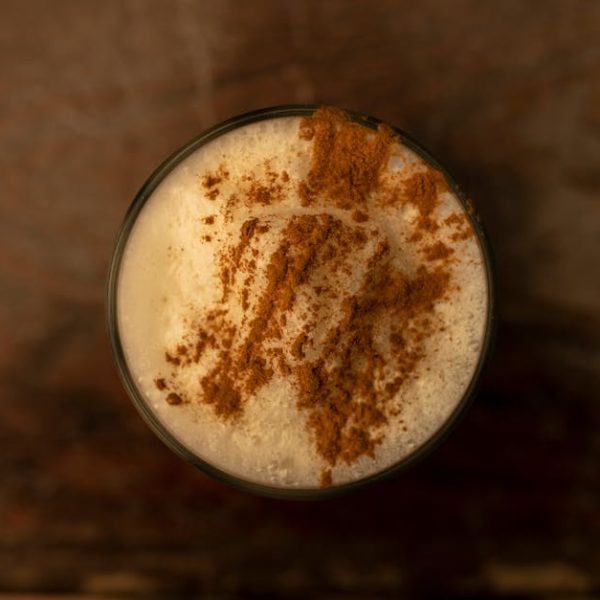Coconut milk, a versatile and delicious ingredient used in a variety of culinary contexts, does indeed expire. Understanding the shelf life of coconut milk, and recognizing key signs of spoilage, will help avoid potential health issues and provide optimal taste experiences. Throughout the following sections, we’ll delve into the factors that influence coconut milk’s longevity, signs to discern its freshness, and effective storage methods to extend its usability.
Understanding the Shelf Life of Coconut Milk
Coconut milk’s shelf life is influenced by numerous factors such as temperature variation and storage conditions. An unopened coconut milk can usually last in the pantry for about 2-3 months past its printed date. Once opened, if stored in the fridge, it lasts around 4-7 days. In the freezer, opened coconut milk maintains its quality for approximately two months. Here’s a quick approximated shelf life rundown:
- Pantry (unopened): 2-3 months past printed date
- Fridge (opened): 4-7 days
- Freezer (opened): 2 months
Storage conditions play a critical role in maintaining coconut milk’s quality. To maximize its shelf life, ensure it’s sealed tightly and stored in a cool, dark place when unopened. Once opened, refrigerating coconut milk in an airtight container is key.
Physical Changes in Coconut Milk Signifying Spoilage
Spoilage in coconut milk often presents itself through changes in color, consistency, and texture. Fresh coconut milk is ordinarily creamy and white while spoiled milk turns yellowish and sports a chunky texture. Separation or clumping can occur, which in some instances signifies normal fat separation. However, when coupled with a sour smell and taste, it can mean spoilage.
When determining milk’s freshness, check for these physical signs:
- Changed color to grey or yellow
- Clumpy or curdled texture
- Visible mold
Notably, shaking or heating coconut milk can combat natural fat separation. However, if clumps persist after these actions, it’s typically a sign of spoilage.
Potential Harmful Effects of Consuming Spoiled Coconut Milk
Consumption of spoiled coconut milk can lead to health complications like food poisoning and bacterial infections, underlining the significance of proper storage and freshness identification. Common symptoms to watch out for include nausea, vomiting, diarrhea, and abdominal cramps.
In case one suspects they’ve consumed spoiled coconut milk, they should seek immediate medical attention.
Smell and Taste As Indicators of Coconut Milk Going Bad
Changes in scent and flavor offer reliable spoiling signals. Fresh coconut milk has a sweet, slightly nutty aroma and a rich, creamy flavor. In contrast, spoiled coconut milk often smells sour or rancid, with a bitter or off taste.
To safely verify coconut milk’s freshness without ingesting possibly spoiled substance, place a small amount on a spoon, stir it, smell it, and taste a tiny bit.
Coconut Milk Vs Coconut Cream: Shelf Life and Signs of Spoilage
Coconut milk and coconut cream, though similar, differ in factors like shelf life, storage, and spoilage signs. For instance, coconut cream has a shorter shelf life due to its higher fat content. It’s also more prone to separation and clumps, which can make determining its freshness more challenging than with coconut milk.
When comparing coconut milk and cream, it’s vital to understand that they have distinct fresh and spoiled smells and tastes. Coconut cream can be a suitable alternative to coconut milk if used properly and stored in the correct conditions. Still, understanding the differences between the two is crucial to preventing spoilage and maintaining freshness.
Understanding the Shelf Life of Coconut Cream
Coconut cream generally has a shorter shelf life due to its higher fat content. Unopened, it can last 2-3 weeks in the pantry past its printed date. Once opened and stored in the fridge, its optimal taste period lasts approximately 3-4 days. Freezing it significantly extends its shelf life to 4-6 weeks. A quick comparative summary:
- Pantry (unopened): 2-3 weeks past printed date
- Fridge (opened): 3-4 days
- Freezer (opened): 4-6 weeks
Like coconut milk, coconut cream’s shelf life is also affected by storage conditions. Keep unopened cream in a cool, dark place. After opening, an airtight container in the fridge can help maintain its freshness.
Physical Changes Signifying Coconut Cream Spoilage
Coconut cream, similar to coconut milk, changes in color when it’s spoiled. It shifts from its usual off-white to brown or gray. The texture changes from creamy to chunky, and mold might appear. It’s key to remember that fat separation is normal, especially when coconut cream is stored in the fridge or over time. However, if the product is grey and smells sour, it’s spoiled.
Physical signs checklist:
- Changed color to brown or grey
- Clumpy or curdled texture
- Visible mold
Like coconut milk, shaking or heating coconut cream can help discern if it’s natural separation or spoilage. If it remains intact after these actions, it’s likely spoiled.
Potential Harmful Effects of Consuming Spoiled Coconut Cream
The health risks of consuming spoiled coconut cream mirror those of coconut milk, with a potential for food poisoning and bacterial infections. Look out for symptom such as vomiting, diarrhea, stomach cramps and nausea. If suspected, seek immediate medical attention.
Smell and Taste As Indicators of Coconut Cream Going Bad
The smell and taste change when coconut cream spoils. It initially has a sweet, creamy aroma, leaning towards a more nutty smell. When it goes bad, you’ll smell something sour, rancid, or both. If it’s bitter or off-tasting, it’s gone bad.
To safely test the freshness of coconut cream, follow the same steps outlined for coconut milk. Place a small amount on a spoon, stir and smell before tasting a tiny bit.
Coconut Milk Vs Coconut Cream: A Summary
We’ve discussed the differences and similarities of coconut milk and coconut cream throughout this article, and it’s important to understand both to keep them fresh. Here’s a summarized comparison:
| Coconut Milk | Coconut Cream | |
|---|---|---|
| Pantry (unopened) | 2-3 months past printed date | 2-3 weeks past printed date |
| Fridge (opened) | 4-7 days | 3-4 days |
| Freezer (opened) | 2 months | 4-6 weeks |
| Separation normal | Yes | Yes |
| Spoiled Smell | Sour, rancid | Sour, rancid |
| Spoiled Taste | Bitter, off taste | Bitter, off taste |
Remember that coconut cream, with a higher fat content, tends to spoil quicker and needs stricter storage conditions than coconut milk. Nonetheless, it can serve as a delicious alternative if used wisely.
In conclusion, understanding the spoiling process and signs of both coconut milk and cream will safeguard you from potential health risks and ensure optimal taste for your recipes.
Key Takeaway:
- Coconut milk and coconut cream do expire and recognizing their shelf life and signs of spoilage are crucial to maintaining freshness.
- Opening and refrigeration significantly cut down the shelf life of both coconut milk and coconut cream.
- The physical changes, like color changes and clumping, along with changes in smell and taste, serve as reliable indicators of spoilage.
- Consumption of spoiled coconut milk or coconut cream can lead to health complications like food poisoning and bacterial infections.
Quality is everything when it comes to food and its taste, and being able to identify if coconut milk or coconut cream has gone bad will save your recipes and your health. Store these products under suitable conditions and check regularly for freshness to ensure a great culinary experience.
FAQs
Q: Can I still consume coconut milk or cream after its expiration date if there are no signs of spoilage?
A: While it might not be immediately harmful, it’s best not to consume coconut milk or cream past its expiration date. The quality and nutritional value will have likely deteriorated.
Q: If I freeze coconut milk or cream, will it alter the taste or texture?
A: Freezing coconut milk or cream might cause a slight change in texture making it grainier, but the taste generally remains the same.
Q: Can I use coconut milk or cream as a substitute for dairy milk or cream in recipes?
A: Yes, you can use coconut milk or cream as a dairy-free alternative in many recipes. However, do take note of their distinct flavor which can change the taste profile of your dish.
Q: Does canned coconut milk or cream last longer than the carton or powdered types?
A: Yes, canned coconut milk or cream generally has a longer unopened shelf life compared to carton or powdered versions due to the canning process’s preservative effect.
Q: How can I tell the difference between natural separation and spoilage in my coconut cream?
A: Natural separation in coconut cream often results in a thick, solid layer on top and liquid at the bottom. If the product clumps together even after stirring or heating, and is paired with odd smells or colors, it’s likely spoilt.
Please feel free to share this article to help others understand how to keep their coconut milk and cream fresh for longer. Visit our website for more posts like this.






